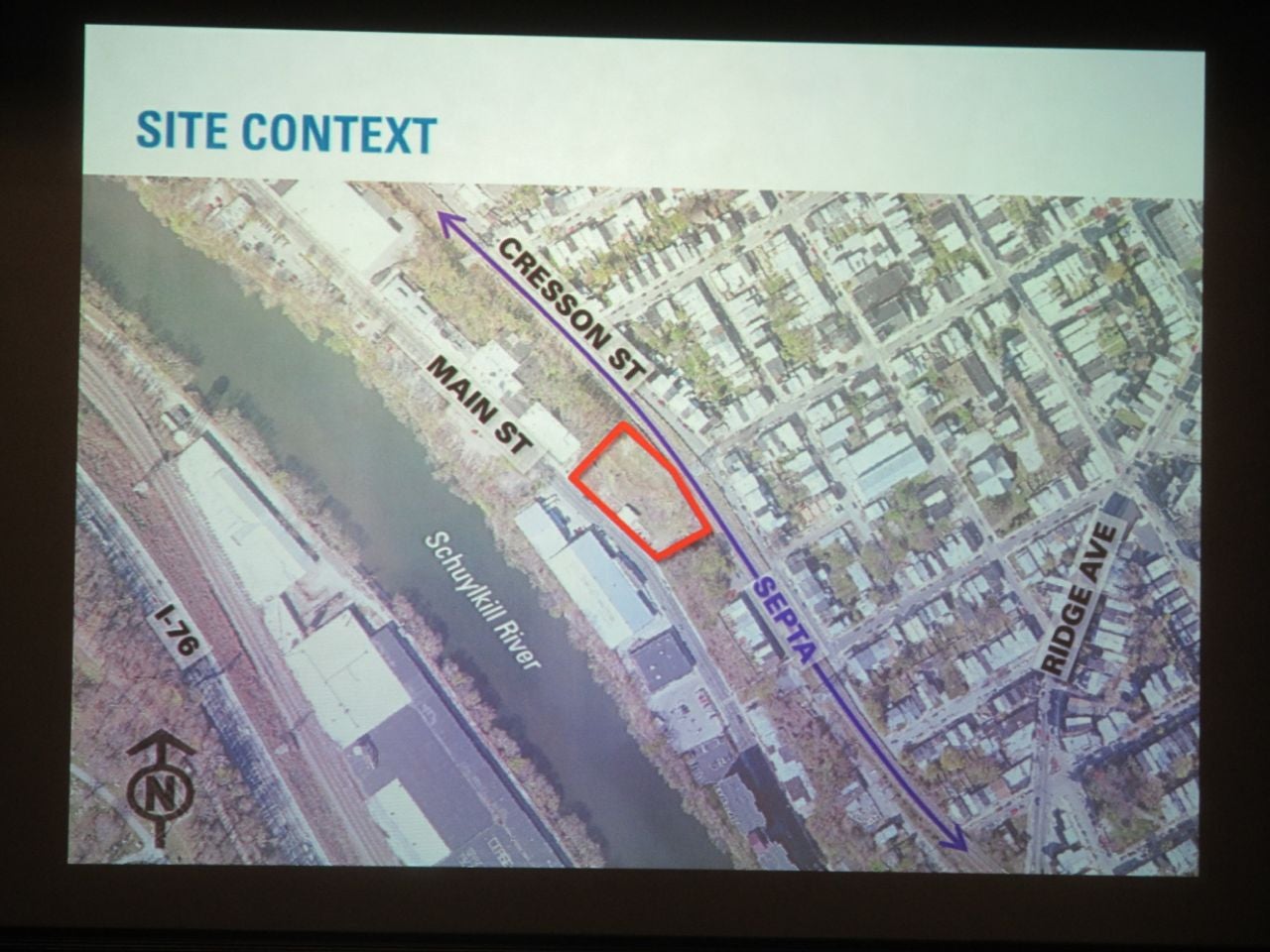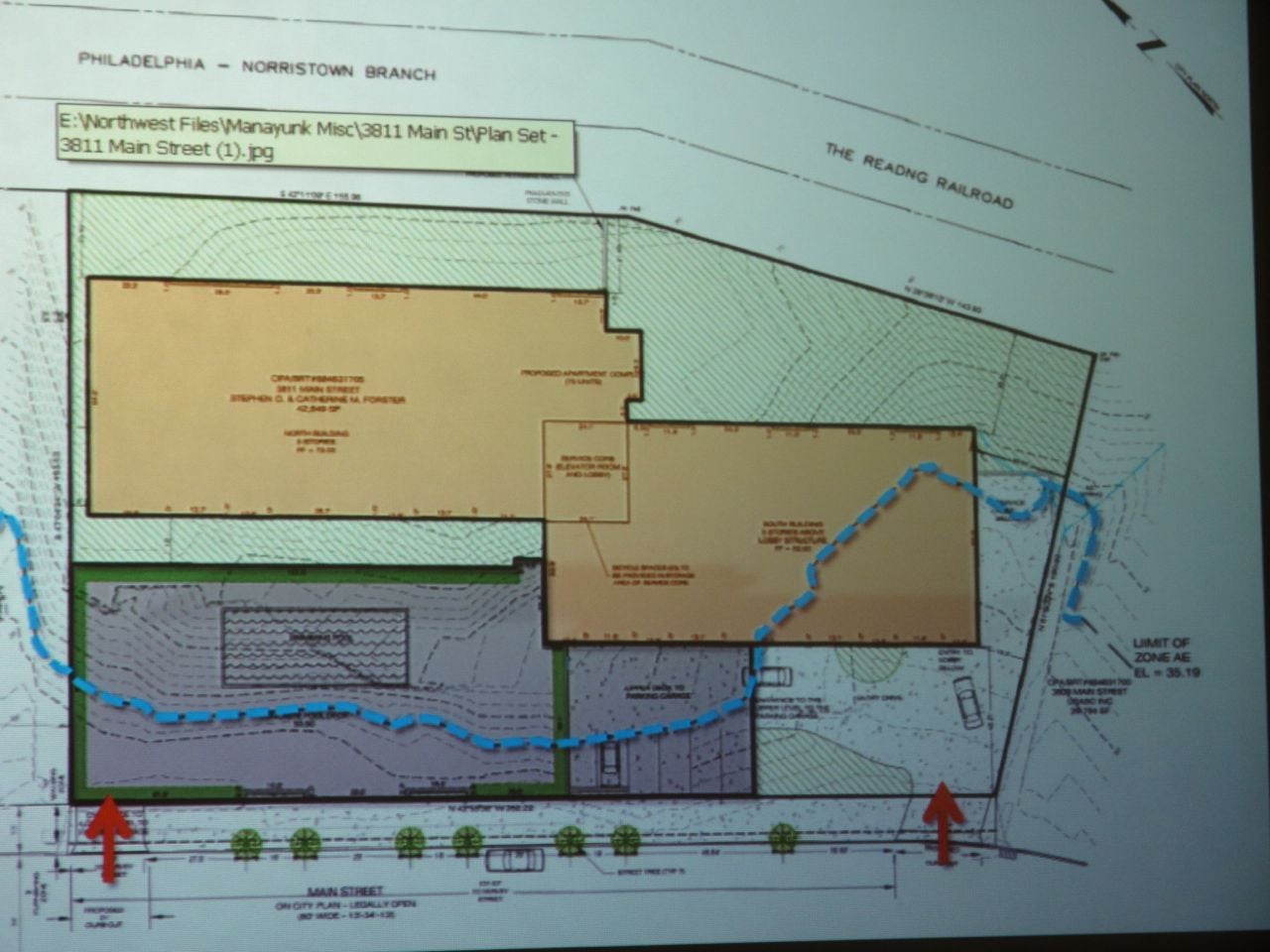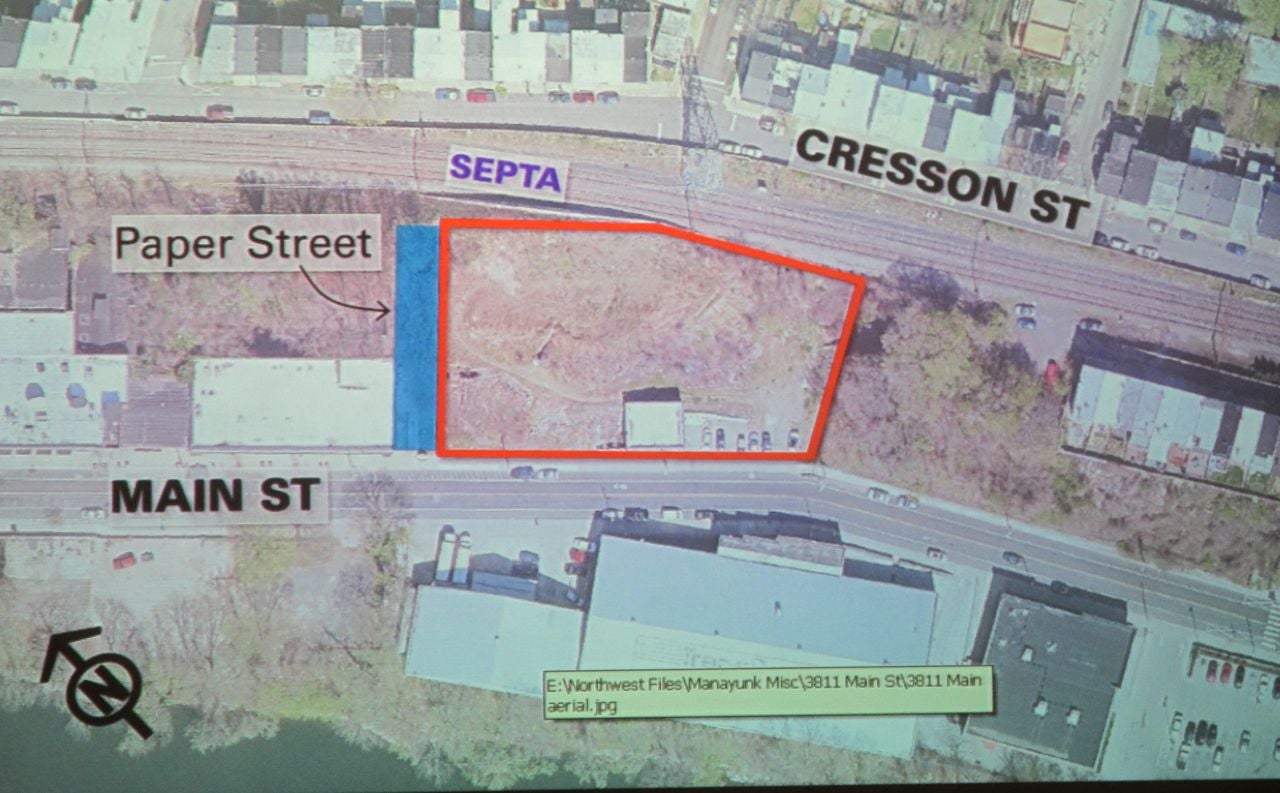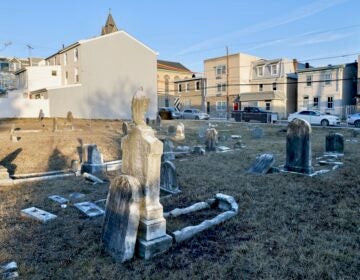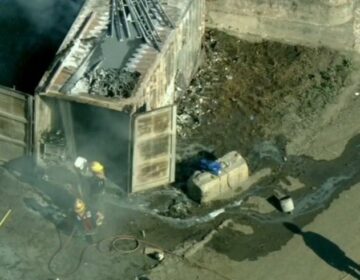Opinions abound over development scheme for Manayunk’s Lower Main Street

A 73-apartment development proposed for Manayunk’s lower Main Street is pitting some community members’ and city planners’ hopes for a livelier streetscape against what others say is the present and future reality of the site. Another consideration is also the impact FEMA rules could have on the plan.
Developer Stephen Goldner, the now-retired architect responsible for Rittenhouse Square’s Dorchester, plans to build at 3811 Main Street on a section of hillside fronting on Main and stretching up to SEPTA’s Manayunk-Norristown line tracks. Beyond the tracks sits Cresson Street.
This site isn’t in the busy restaurant- and bar-heavy section of Main Street, but in an area where lots of land, including this parcel, still bears outdated industrial zoning. There are other residential developments nearby, and some commercial properties, although many of them are now vacant.
Everyone agreed this is a topographically challenging site, with elevation changes from the Main Street frontage to the tracks at a greater than 25 percent grade in places, floodplain issues, and rock outcroppings.
Goldner, who is working with architect Lance R. Kraemer Associates, proposes a parking garage set back about 10 feet from the street, including the width of the sidewalk, with two residential buildings behind it. The apartments would be split among two buildings, the first of which would sit about 45 feet back from Main Street, the second a bit further behind, and so a bit higher on the hillside. The two buildings, five stories atop a lobby, would be joined together by a shared elevator.
The Philadelphia City Planning Commission is currently working on the Lower Northwest District-level comprehensive plan, and Manayunk is within the district. PCPC’s Northwest Community Planner Matt Wysong told commissioners that while the plan remains a work in progress, residents and planners share the desire to see this part of the community evolve into something more lively, with more multi-family residential buildings that will alleviate some of the pressure to divide the community’s single-family homes into multiple apartments and active ground floor uses that will bring life to the street.
In keeping with these goals, planning staff told Goldner his original plan to provide one parking space for every apartment translated into a too-big garage right on Main, and requested he significantly reduce the amount of parking provided. In that more-walkable future, particularly with changing attitudes about car ownership, all that parking won’t be needed. In the meantime, there’s plenty of on-street parking at that portion of Main Street, Wysong said.
Goldner came to this week’s PCPC meeting with a revised plan, calling for 38 spaces instead of 77 (the total number of apartments was also reduced from the original 75.) The garage has a swimming pool and common area on its roof. Beneath the roof, there were originally two floors of parking, one of them underground. In the revised rendering, there is one level of parking, with the below-grade portion eliminated.
Also at the request of planning staff, Goldner rounded the garage corners and added more landscaping, and added a 10-foot-wide pedestrian walkway linking Main Street to the apartments’ main entrance.
As Goldner predicted, civic groups want the one-to-one, parking-to-apartment ratio. Everyone who lives there will definitely need a car, Kevin Smith of Manayunk Neighborhood Council told the planning commission. For one thing the closest supermarket is more than a mile away and up hill. And perhaps there is street parking enough for the residents of this proposed building, Smith said, but what if more apartment buildings go up? Where will all the cars go then?
And what of the goal to create a mixed-use, more-walkable Lower Main Street, asked resident John Hunter, representing both the Manayunk Neighborhood Council and Wissahickon Neighbors Civic Association. Placing any parking garage up against Main Street is the wrong choice, said Hunter, who is also an architect. “We suggested the parking be built at the rear of the site, at the base of the SEPTA retaining wall,” he said.
The site is near some viable commercial space, Hunter noted, and even if commercial isn’t viable currently (Goldner says it most certainly is not) when more development reaches Lower Main, it could be. Putting a garage in that space takes away that opportunity forever, he said.
Hunter liked the idea of fewer parking spaces, but suggested the amount of units be decreased further to match. The proposed development tries to squeeze too many on a lot that size, especially considering the physical constraints.
Commission Chairman and Deputy Mayor for Economic Development Alan Greenberger said the expense of dealing with the physical constraints may require this number of units to make the project viable, and Goldner said he split the units into two buildings to help with scale.
Commissioner Nancy Rogo Trainer said she agreed with everything Hunter said, calling the development a significant opportunity for positive or negative precedent. “Walking by a blank wall of parking would be a negative precedent,” she said.
But here’s yet another wrinkle – a federal one.
FEMA regulations do not allow residential use below the floodplain. They do allow parking. They do allow commercial use. So how about commercial use below the floodplain with residential use above the commercial space? Nope.
FEMA separates the two uses in its regulations, and doesn’t allow for mixed-use, Wysong said.
Greenberger said the disallowance of mixed use is “clearly not for risk reasons,” and suggested this is a language error in the FEMA code. He suggested the answer may be something that’s not commercial in the traditional sense, but that puts some sort of life on the street.
He and Trainer, an architect, said they want development on the site, but this plan isn’t yet right for it.
Commissioners Pat Eiding, who is president of the Philadelphia AFL-CIO, and Nilda Ruiz, President and CEO of Asociación de Puertorriqueños en Marcha, Inc., disagreed.
Eiding said the good parts of the proposal outweigh the problems in his mind, especially considering the site challenges.
Ruiz loved the idea of getting more people to live in this part of the city – it might even help lessen the gridlock of commuters on I-76, she said. It’s good to think about getting more life at street level, she said. “But before life can happen, life has to be there. We need to do something there. This could attract other things.”
These aren’t even the only issues raised at the meeting:
The civics said the buildings are far too high. The developer said they are only 50-feet tall, and the 80-plus-foot measurements are technicalities based on the level of Main Street. Technicality or no, a height variance is among those Goldner must get from the ZBA, though: Current zoning allows a maximum of 38 feet, and the maximum here is officially more than 85.
He also needs a variance for site clearing and earth disturbance on a property with a slope greater than 25 percent.
Greenberger said he wasn’t concerned about the slope, a rule designed to deal with conditions that really don’t exist at the site. But he, Trainer and Hunter all noted concerns related to disturbing the rock outcroppings on the parcel. It’s complicated, they said, and it could disturb other properties.
The development team said they would only be disturbing a small amount of rock at one corner of the garage, now that the proposed garage is smaller. Hunter said Goldner would be taking 15 feet off the top of one rocky outcropping for one of the buildings, but Goldner said this wasn’t so – the building will sit on top of that rock.
Wysong noted the changes in the garage and landscaping and addition of the walking path addressed some of staff’s recommended provisos for approval. Another proviso: Submitting a plan for safely handling earth disturbance to both the commission and the city water department. Staff also asked the developer to consider setting aside a rear right of way that, in case of flooding, would allow residents to leave the site via an existing pedestrian bridge, and would also allow emergency access should a resident need help when Main Street is under water.
In the end, the commission decided to give the developer, staff and community more time to make adjustments to the plan, and tabled a vote for 30 days.
WHYY is your source for fact-based, in-depth journalism and information. As a nonprofit organization, we rely on financial support from readers like you. Please give today.



